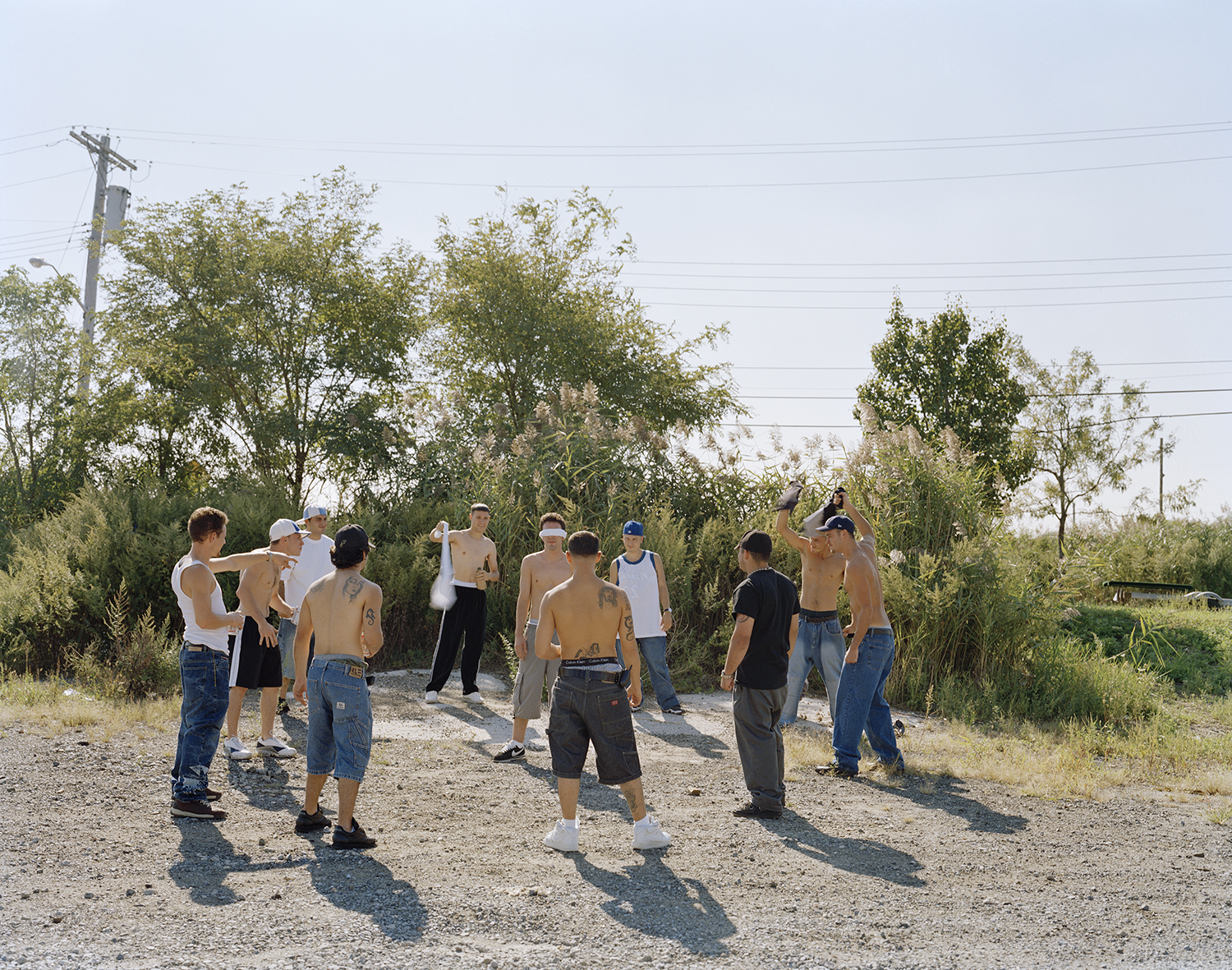
Photographer Katie Murray’s latest book, All the Queens Men (Daylight), has been many years in the making. Around 1999 when she began it, Murray’s project was about landscape. Landscape is a natural choice for those new to a large-format camera, as she was then, and the borough of Queens, from whence she hails, is an intriguing, under-represented subject. But along the way, the project also became about men. Murray’s close relatives and their friends became her subjects, although they’re not identified as such. Instead they stand in for a particular breed of man, working-class and tough: a distinctively New York male.
Each of Murray’s photos suggest a story that goes untold: an older man pulls a younger man in for an embrace, or to tell a secret, or mutter a threat; ten shirtless, tattooed adolescents encircle another, blindfolded. Faith and family are apparent, both born like a weight; a father stares stone-faced at the camera, telltale ashes smudged on his forehead. A young man holds a naked infant protectively, his wrists ominously bandaged. In domestic interiors, men interact uncomfortably amid valanced windows and flowered wallpaper; one stands alone, staring into his drink by an elaborately decorated Christmas tree.
The mix of vulnerability and aggression that initially interested Murray became freighted with different meaning after 9/11. If the toughness of New Yorkers is embodied by these Queens men, their somber attempts to connect with the camera and to each other echoes the vulnerability and trauma of that somber day. In the portrayal of this multi-generational cast of characters, there is also a suggestion of the learned aspect of violence that men sometimes inherit from their culture.
Murray received an MFA in photography from Yale in 2000, and she exhibits the unmistakable influence of the well-known contingency there; a group who embrace photography as a “fiction-making medium,” which can nevertheless convey truth. While the program’s director, Gregory Crewdson, is famous for elaborately-staged cinematic tableaux, alum and resident critic Philip-Lorca diCorcia is known in part for staged images that suggest a more internal drama. His 2003 book, A Storybook Life, is a semi-narrative, semi-autobiographical masterpiece, and comes to mind as a reference point for Murray. All the Queens Men employs similar devices; it mixes photos that were staged with those that were not, and characters who reappear in a shuffled chronology.
In famously diverse Queens, these don’t represent all the men — instead these are Murray’s men — and her relationship to them is made more ambiguous by the introduction of fiction. If her attempts at larger truths about violence and men are often subtle, however, All the Queens Men is still a unique and moving document of gender, history and place.
Katie Murray is a photographer based in Queens New York. All the Queens Men is published by Daylight. Murray will be speaking at New York City’s School of Visual Arts on Tuesday, Nov. 19th at 7pm.
Joanna Lehan is a writer and curator living in New York City.



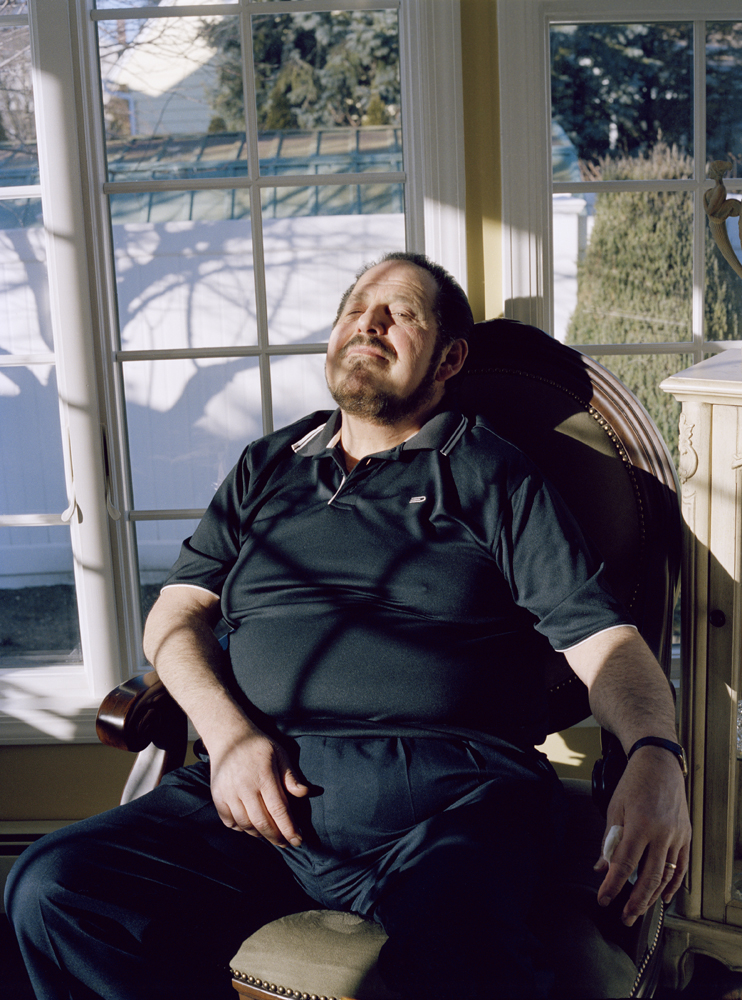
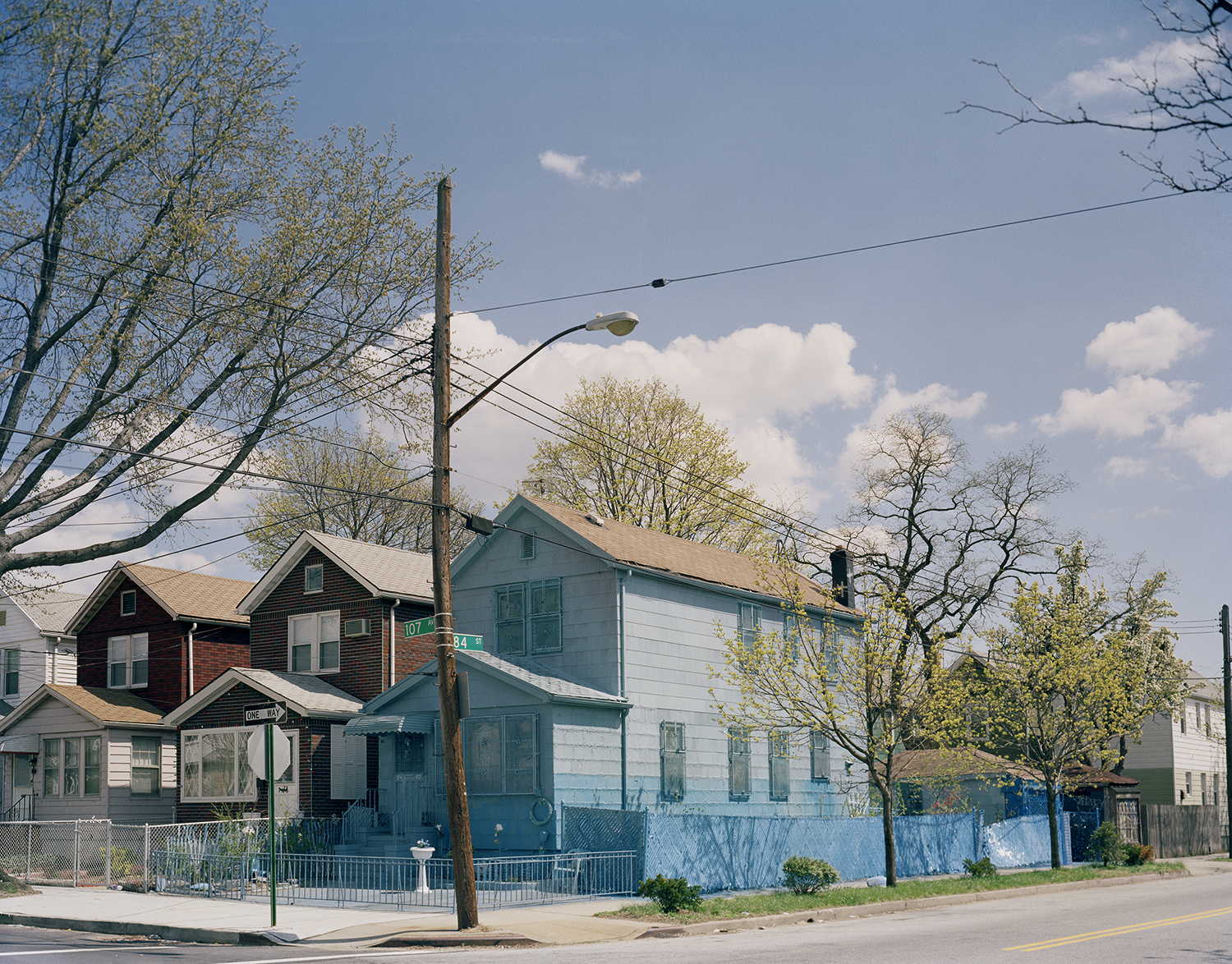
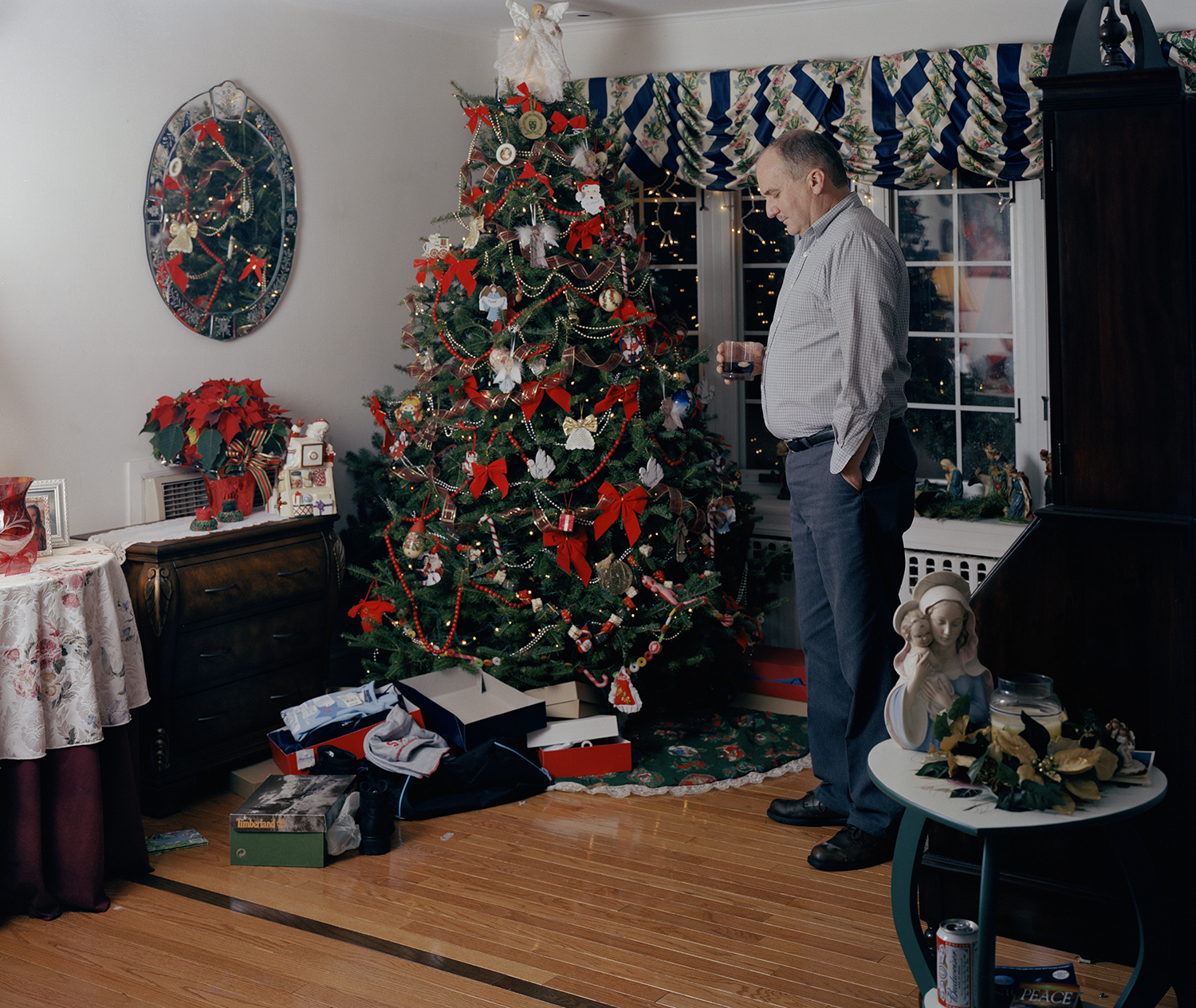
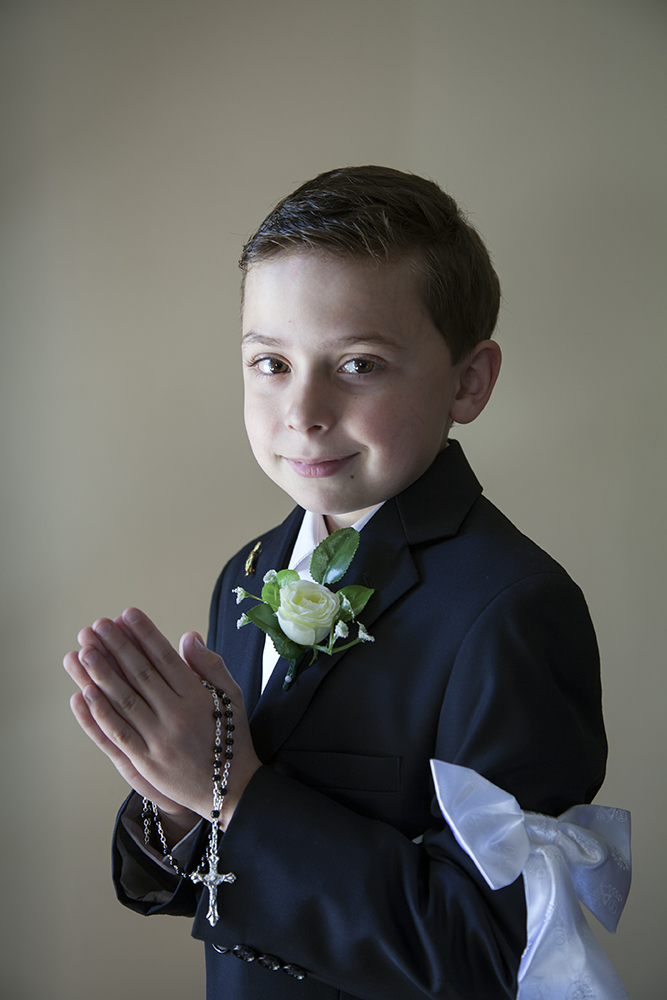
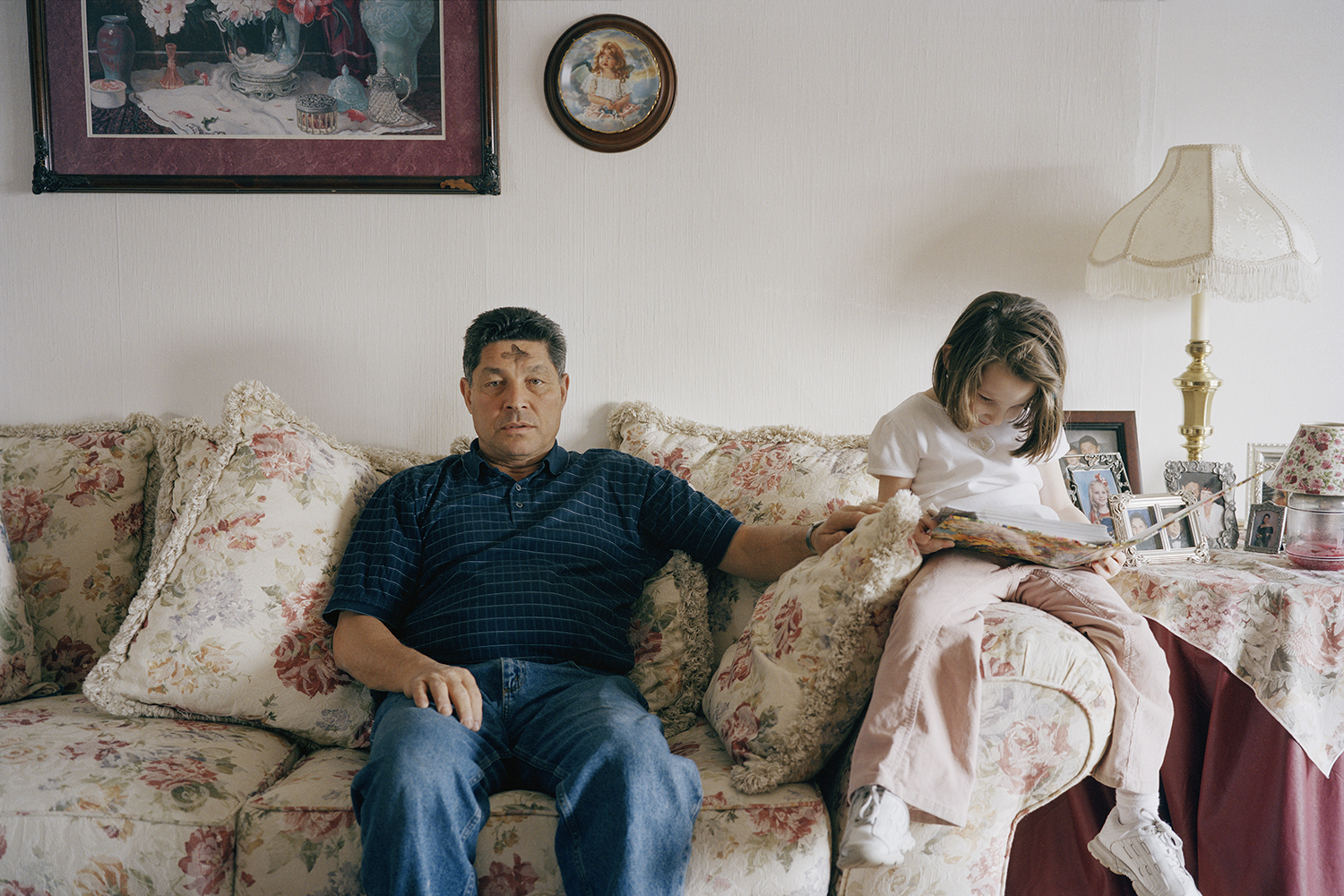
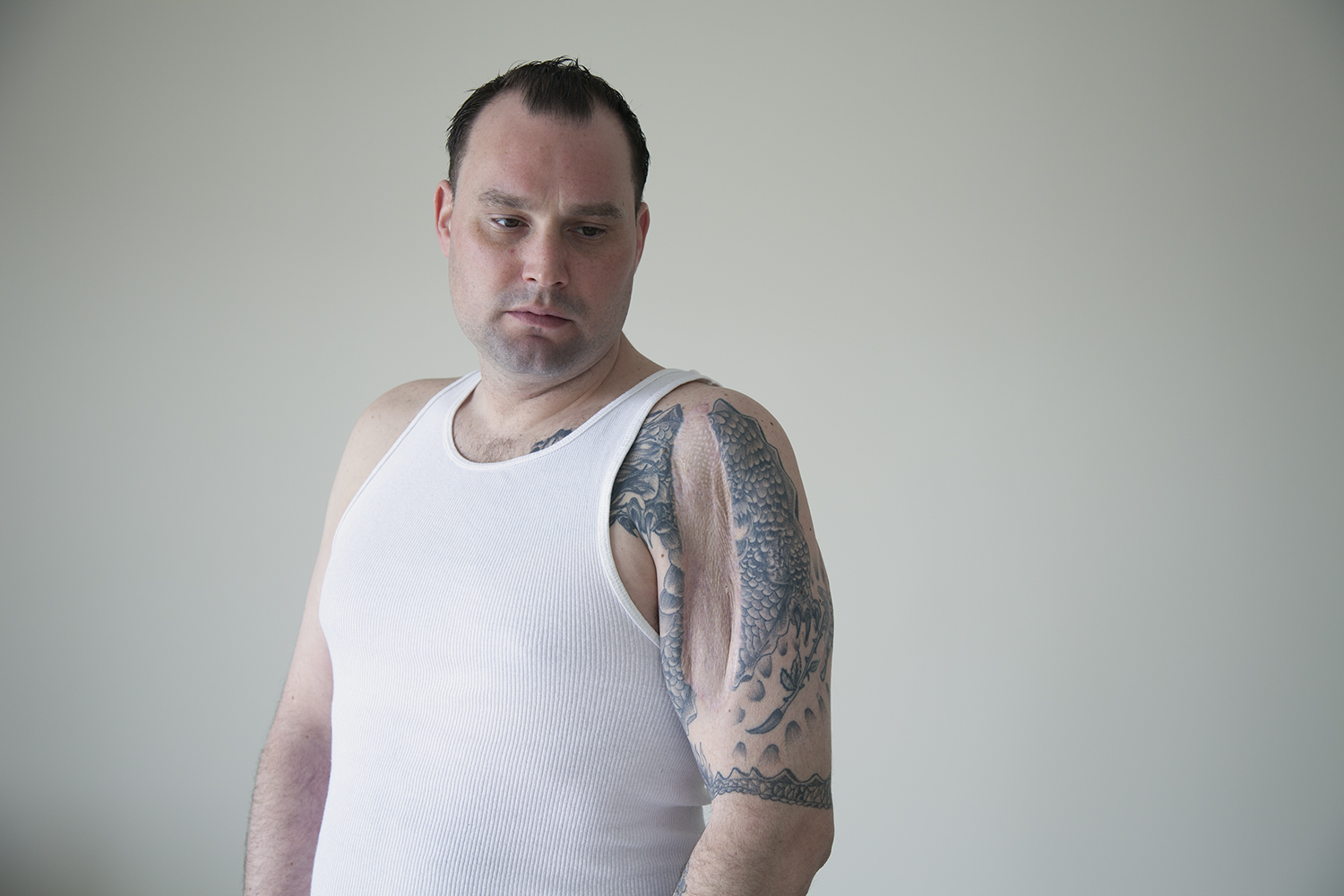
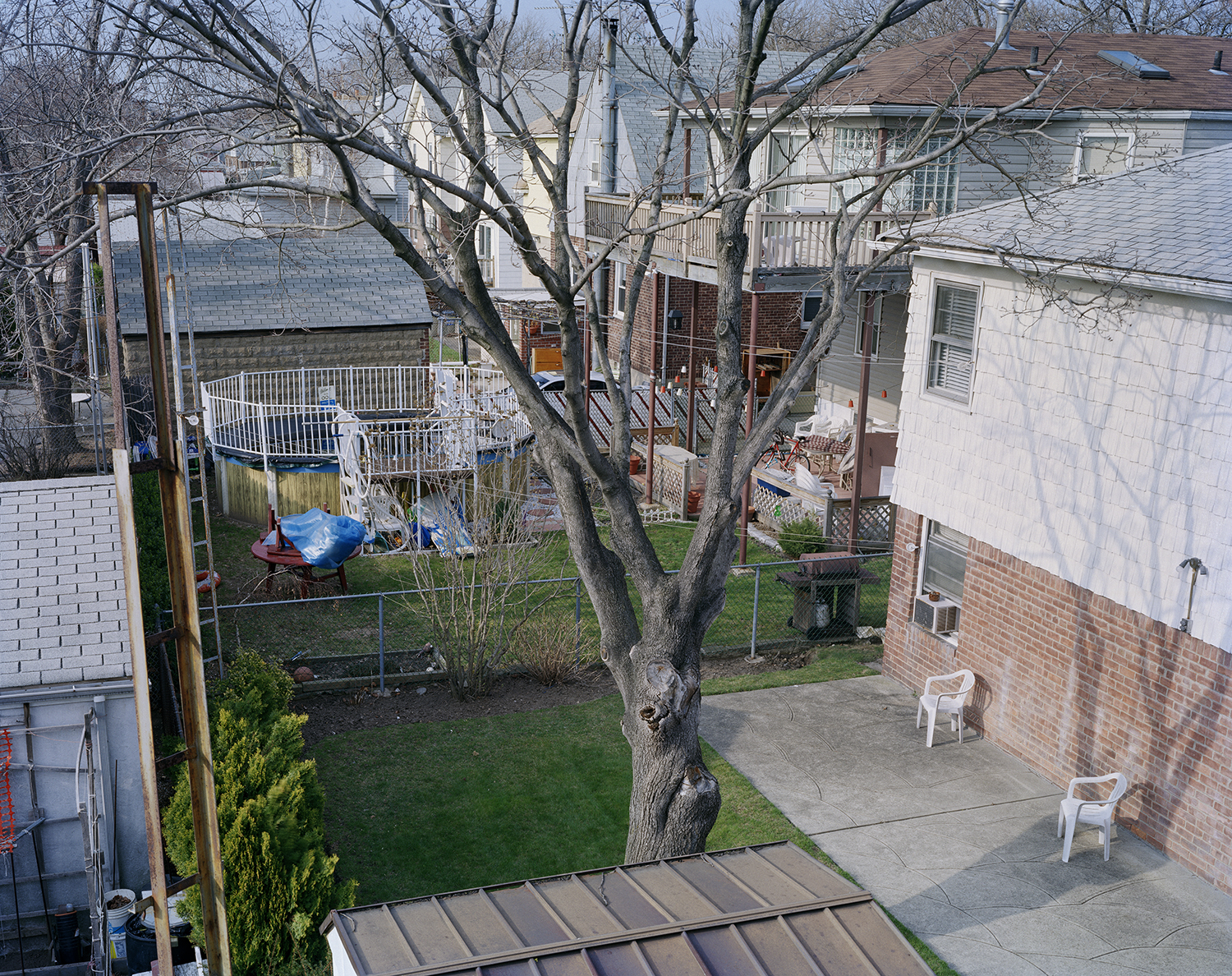

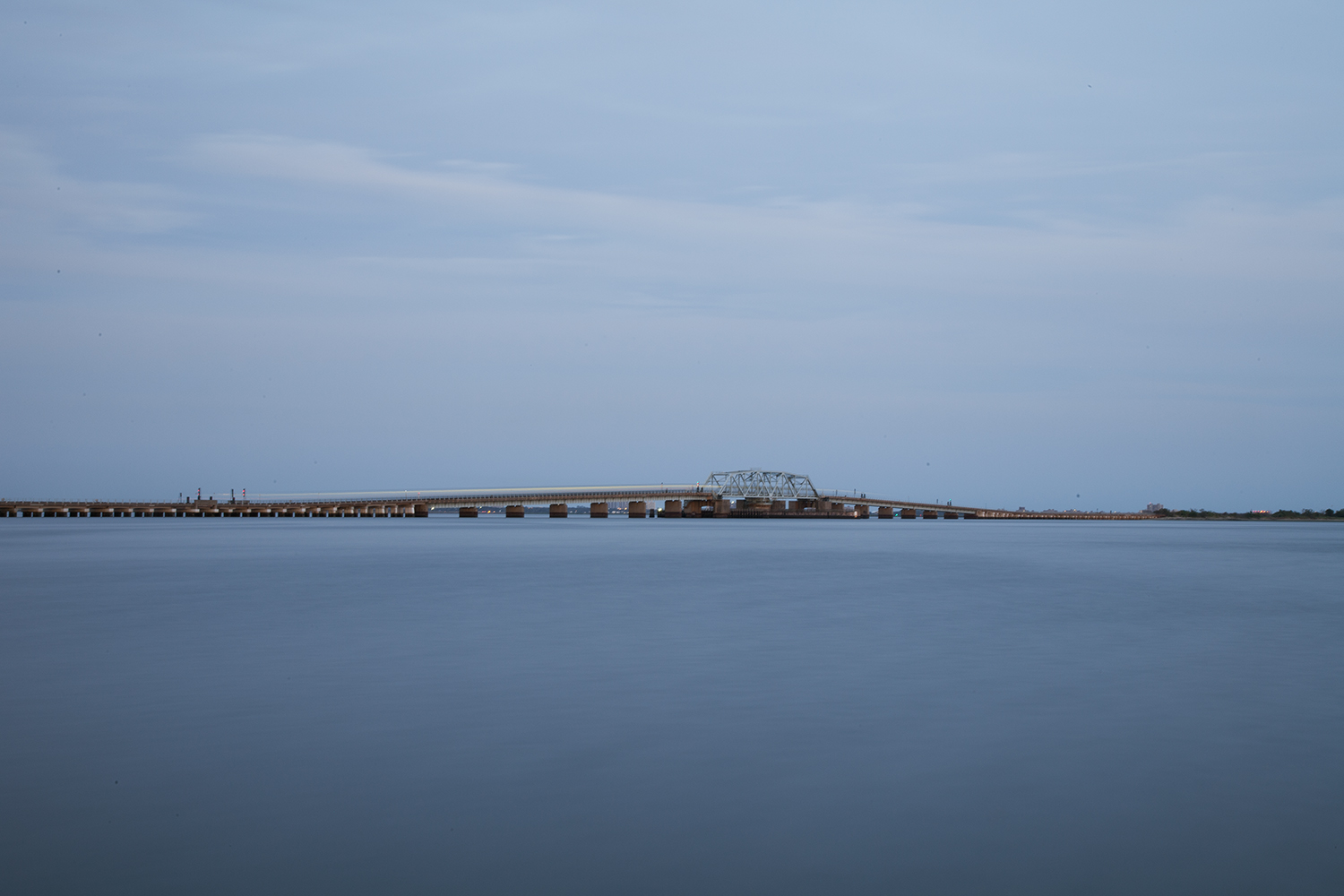


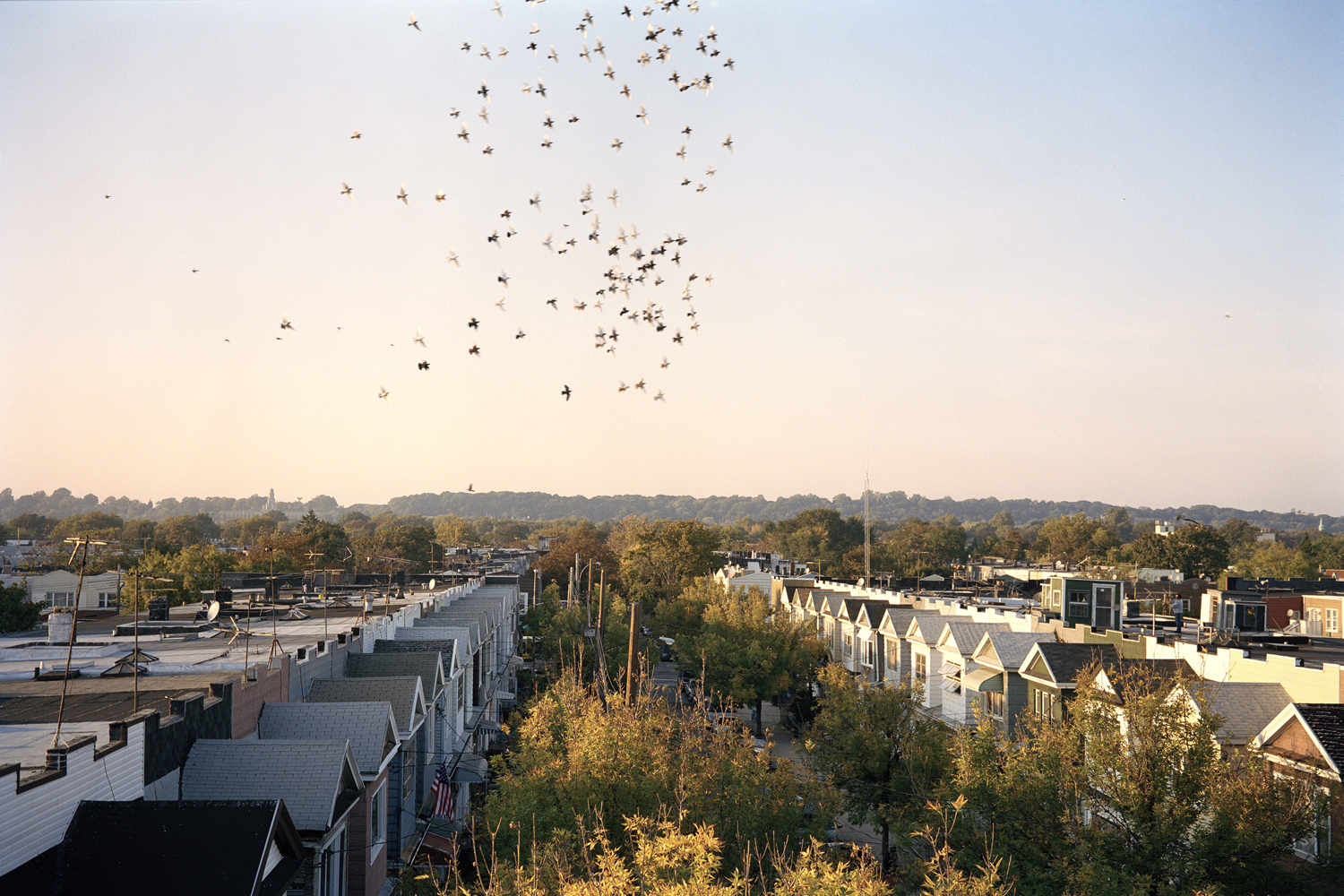
More Must-Reads from TIME
- Donald Trump Is TIME's 2024 Person of the Year
- Why We Chose Trump as Person of the Year
- Is Intermittent Fasting Good or Bad for You?
- The 100 Must-Read Books of 2024
- The 20 Best Christmas TV Episodes
- Column: If Optimism Feels Ridiculous Now, Try Hope
- The Future of Climate Action Is Trade Policy
- Merle Bombardieri Is Helping People Make the Baby Decision
Contact us at letters@time.com